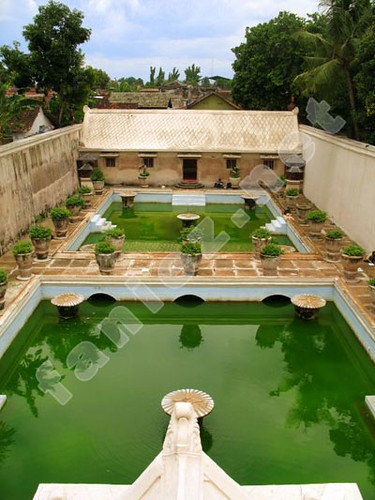
Tamansari Water Castle
It is one of the parts of Palace life and also the most intriguing tourism object. Tamansari literally means “fragrant garden”. It was a secret place as a pleasure park in the old times. Its shape is a garden with its waterways and hundreds of flowering trees. Long time ago, the Sultan and his harems liked to spend his relax times in the tower and watched female bathe pool.
Tamansari is located about 0.5 km southern of Yogyakarta Palace. The architect building is Portuguese, so the European architecture looks very strong, combine with Javanese symbols which is existed around the building. But if we observe deeper the domination of Javanese architecture really appeared in Tamansari. Tamansari was built in the era of Sultan Hamengku Buwono I in the end of 17th century.
Some parts of Tamansari:
Holly part
Hallo part of Tamansari is shown by and isolated building. This room includes of a building which has meditation function for Sultan and his family.
Bathe pool part
This part is a place for Sultan and his family having pleasure or fun. It is separated by two floors building makes the pool very unique. There are fountain looks like certain animals, huge flower pots surroundings the bathe pool.
Kenanga Island part
This part includes of several buildings, they are Kenanga Island or Cemeti Island, Gemuling well, and underground tunnels.
In the area of Tamansari, we will find the Mosque of Saka Tunggal which has only one pillar in its building. Saka means pillar and Tunggal means the only one. It was built in 20 century.
In the same complex of Tamansari we can buy for shopping anykinds of batik paintings, clothes and also the process of its making.







